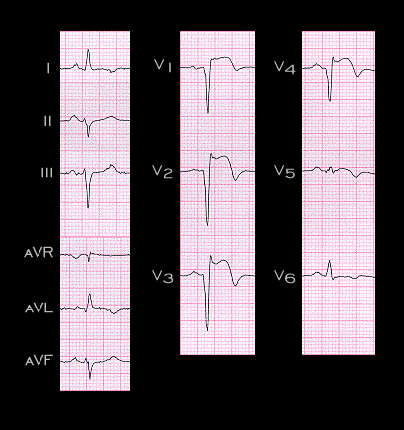
The third type of ST segment change that may simulate an acute transmural ischemia is that associated with the development of a ventricular aneurysm following an acute myocardial infarction. The ECG shown here is such an example. It is from a 65 year old patient who sustained an acute myocardial infarction three years earlier. Cardiac imaging studies revealed a well defined apical ventricular aneurysm with paradoxical wall motion. The persistence of ST segment elevation, such as that shown here, more than three weeks post infarction is suggestive of a ventricular aneurysm. It is noteworthy that within the last decade, the incidence of post infarction ventricular aneurysms has decreased significantly. This can be attributed to the application of coronary revascularization therapies within hours of the onset of an acute coronary event.
